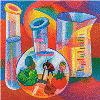Chemical and Biomolecular Engineering, Department of: Papers in Subdisciplines

Papers in Biotechnology
Date of this Version
May 1994
Abstract
A series of experiments evaluated development of porcine zygotes microinjected with DNA in three culture media and two incubation temperatures, from postpubertal and prepubertal donors, and between zygotes injected with DNA into the pronucleus and the cytoplasm. Zygotes recovered from 36 postpubertal gilts in Exp. 1 were injected and cultured in modified NCSU-23, modified NCSU-37, and CZB media at 37°C or 39°C for 7 d. In Exp. 2, zygotes were collected from postpubertal or prepubertal gilts, microinjected with DNA, and cultured in modified NCSU-23. In Exp. 3 superovulated prepubertal gilts had DNA injected into the cytoplasm or pronucleus of zygotes. Mean percentages developing to the expanded or hatched blastocyst stage in modified NCSU-23 (42.9) and modified NCSU-37 (40.1) did not differ, but development was greater than that for zygotes cultured in CZB (8.8; P < .05). Development was greater at 39°C ( P < .05) than at 37°C (36.5 vs 24.6%). Microinjection of DNA decreased development (P < .05) from that of noninjected controls (18.1 vs 43.1%). Zygotes from postpubertal gilts had a higher percentage (6 8.0) of expanded and hatched blastocysts than zygotes from prepubertal donors (29.0; P < .05). No development difference was found between DNA injection into the pronucleus (23.1%) or cytoplasm ( 17.4% 1, but development was less than for control embryos (64.9%; P < .05). DNA microinjected porcine zygotes can be successfully cultured to the expanded blastocyst stage in modified NCSU-23 and modified NCSU-37 media at 39°C. Microinjection of DNA decreases survival of embryos from prepubertal donors more than it decreases survival of embryos from postpubertal donors.


Comments
Originally Published in Journal of Animal Science,1994 May;72(5):1299-305. PMID: 8056677 [PubMed - indexed for MEDLINE] Available at http://jas.fass.org/cgi/reprint/72/5/1299